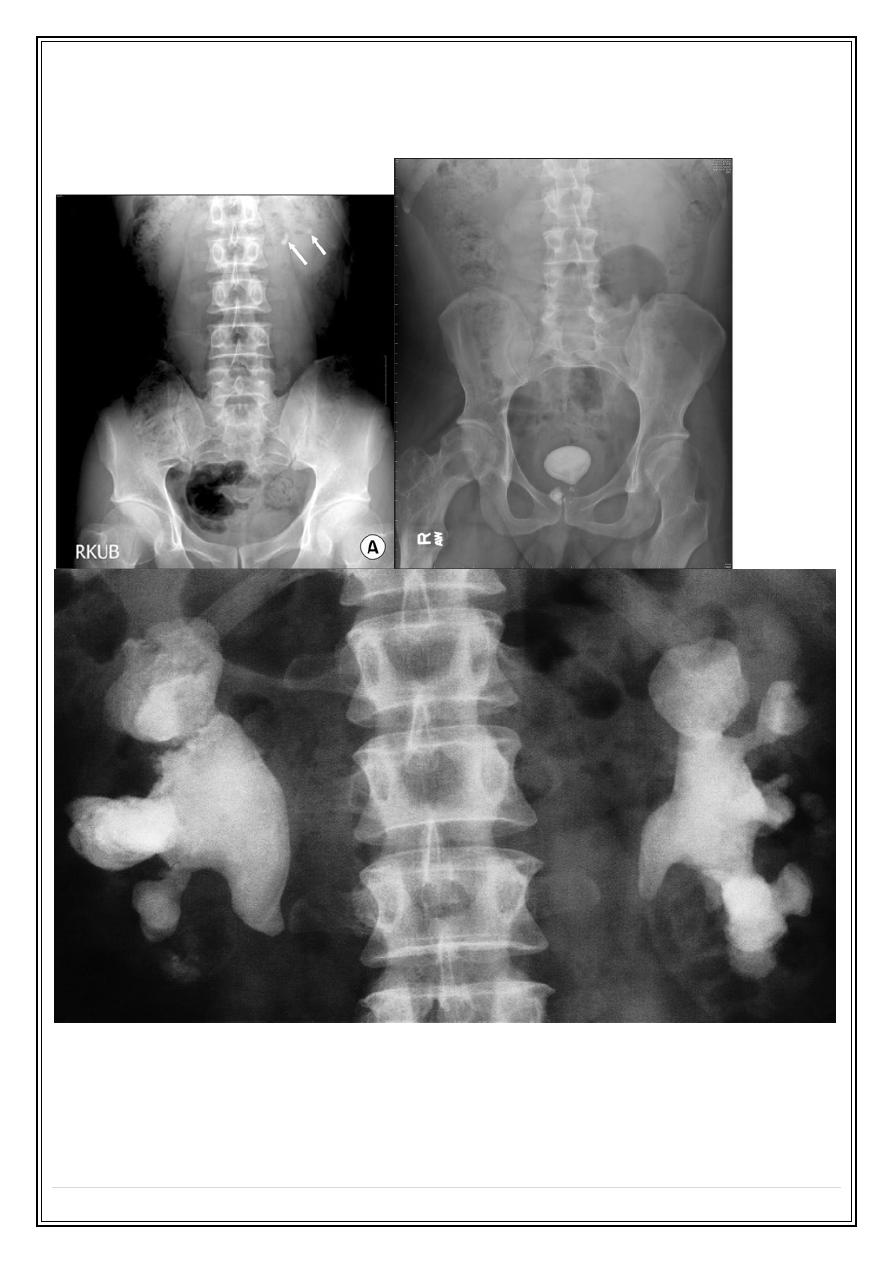
Fifth Stage
Diagnostic Imaging
Dr. Firas A. – Lecture 9
P a g e
1
Genito-Urinary System Imaging Part 2
Urinary calculi
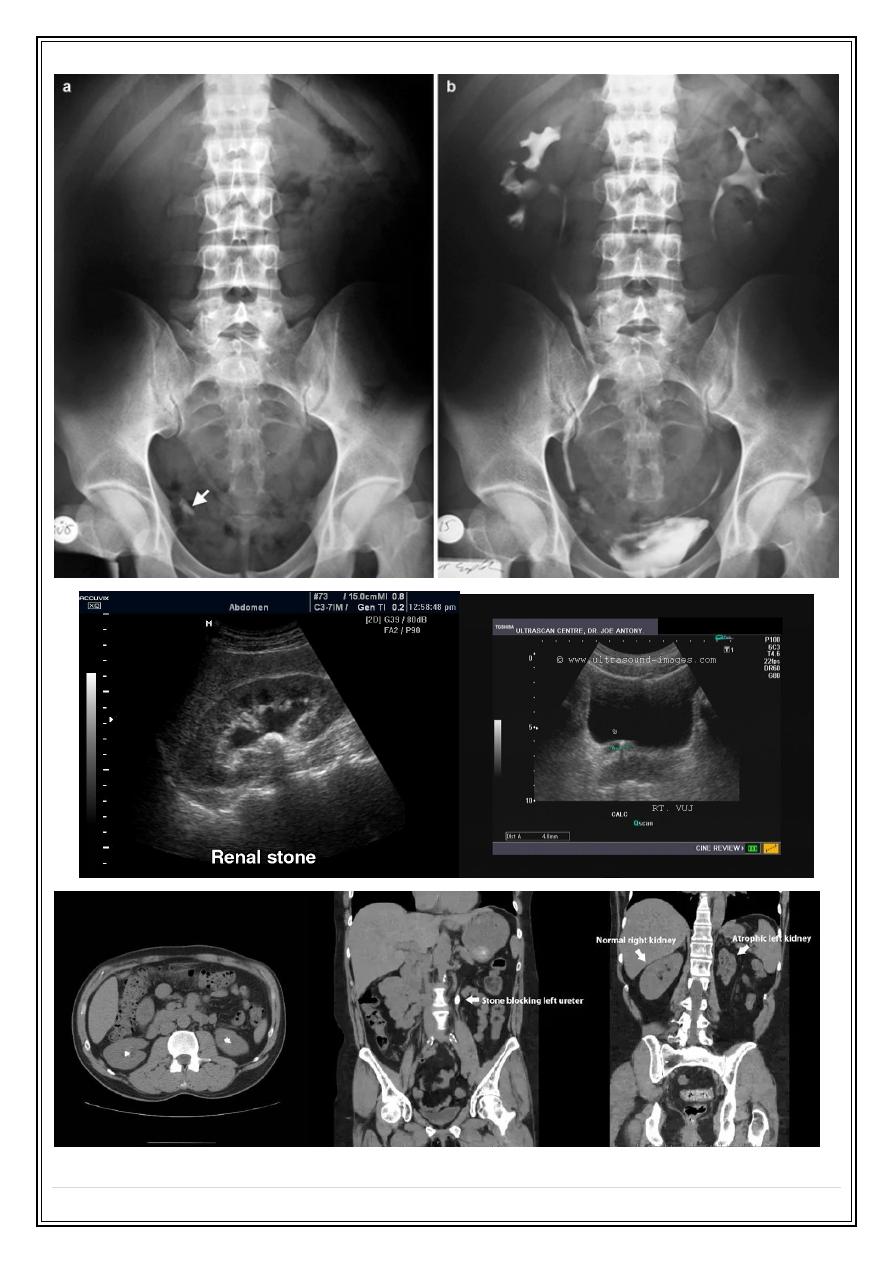
Fifth Stage
Diagnostic Imaging
Dr. Firas A. – Lecture 9
P a g e
2
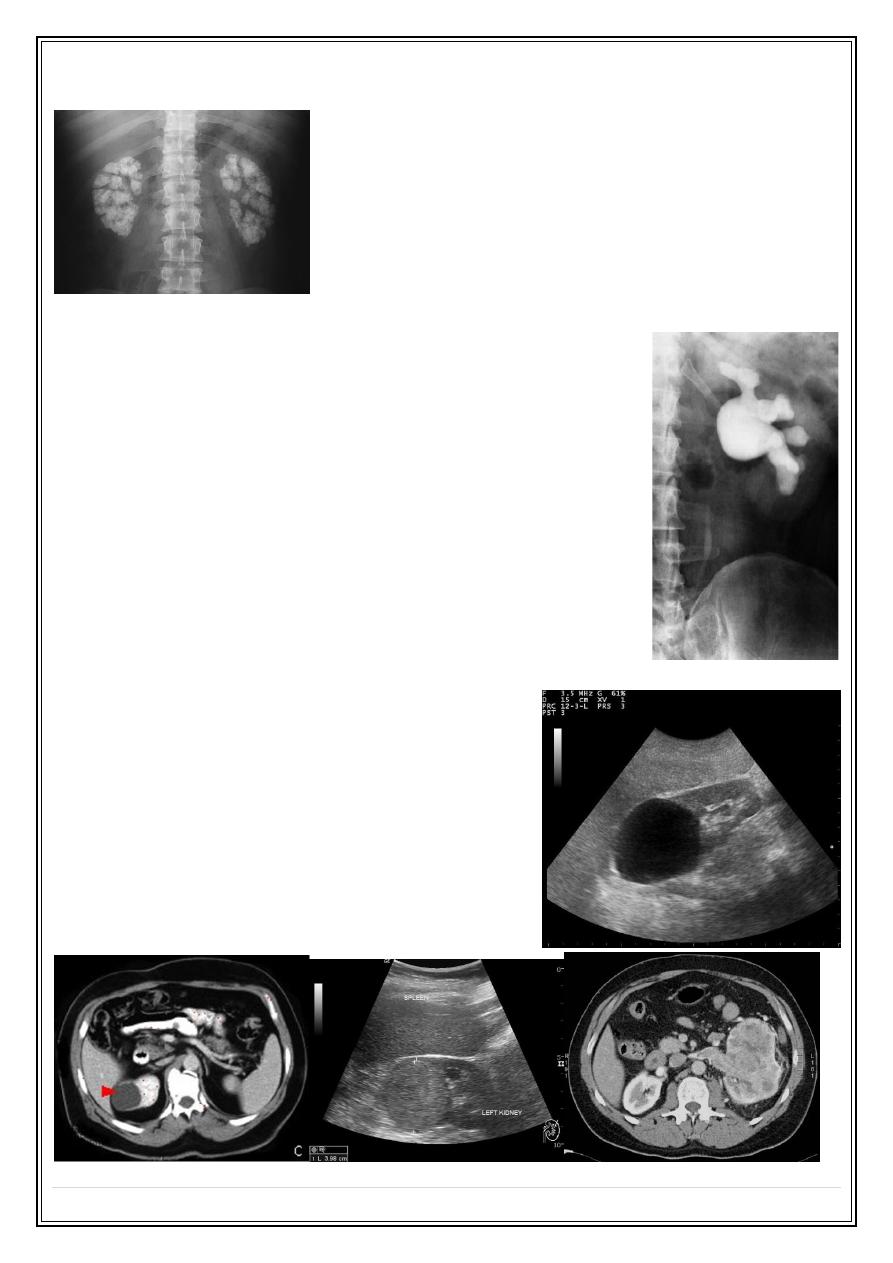
Fifth Stage
Diagnostic Imaging
Dr. Firas A. – Lecture 9
P a g e
3
Nephrocalcinosis:
Congenital intrinsic pelviureteric junction (PUJ)
obstruction
In this disorder, peristalsis is not transmitted across the
pelviureteric junction.
Childern and young adult
Dilatation of the pelvis and calices, with an abrupt change
in caliber at the pelviureteric junction
the ureter is either narrow or normal in size.
Renal parenchymal masses
In adults, the most common malignant tumour
is renal cell carcinoma, whereas in young
children the common neoplasm is Wilms’
tumour.
Other masses: renal abscess, benign tumour
(oncocytoma or angiomyolipoma), hydatid cyst,
and metastasis.
Renal cysts
‘renal pseudotumour’ or column of Bertin
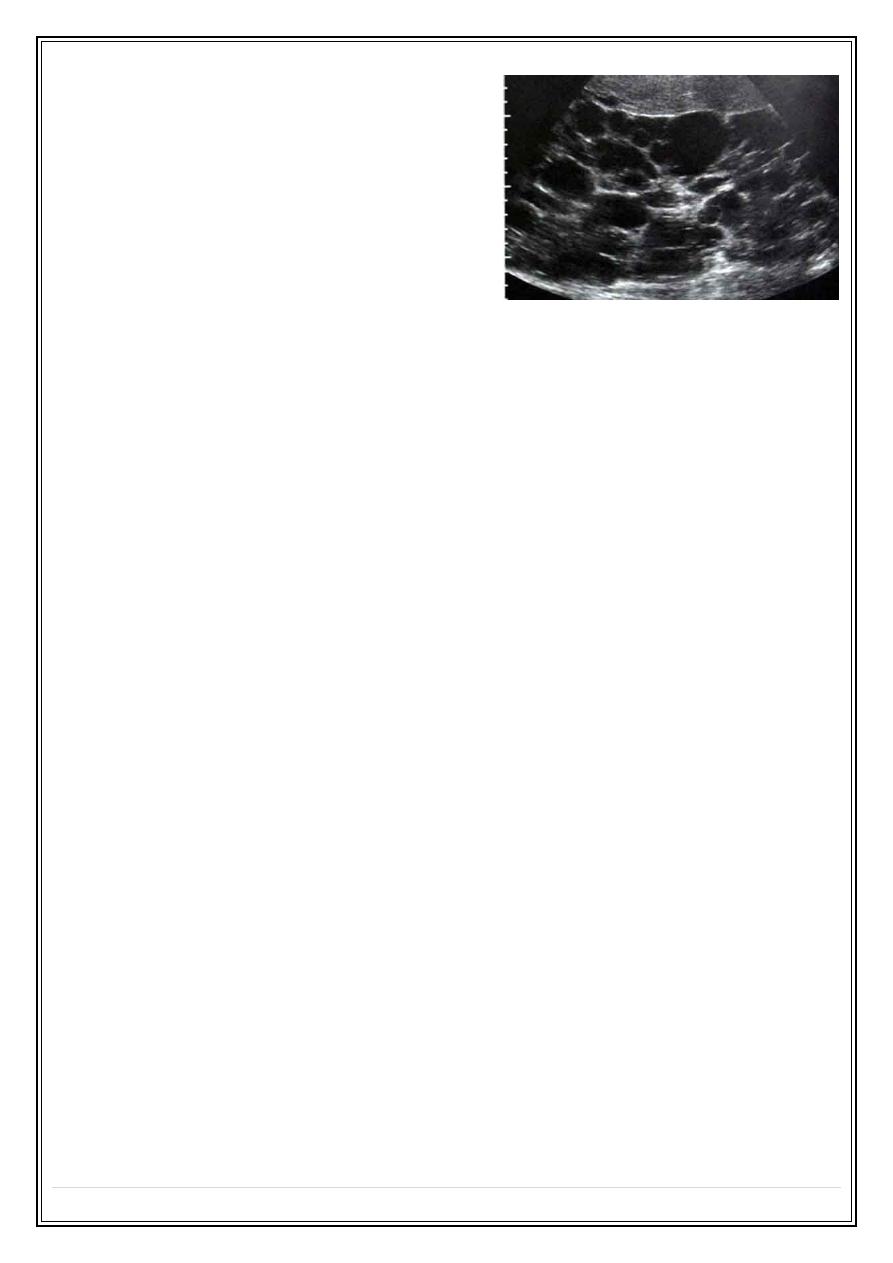
Fifth Stage
Diagnostic Imaging
Dr. Firas A. – Lecture 9
P a g e
4
Multiple renal masses include:
• multiple simple cysts
• polycystic disease
• malignant lymphoma
• metastases
• inflammatory masses.
Renal cell carcinomas
Spherical and often lobulated, usually isodense to renal parenchyma.
Focal necrotic areas may result in areas of low density, and stippled calcification
may be present in the interior of the mass.
Renal cell carcinomas enhance, but not to the same degree as the normal renal
parenchyma. The enhancement is inhomogeneous.
Check LN, liver, adrenal, pancreas, bone, renal vein and IVC
Acute infections of the upper urinary tracts
Most patients with acute urinary tract infection do not require urgent imaging
investigations.
In patients presenting with signs of infection associated with pain, particularly if
the symptoms are not settling with antibiotics, ultrasound and plain films may
diagnose underlying stones, obstruction or abscess formation
Investigation of the renal tract is indicated in all children with a confirmed urinary
tract infection.
Urinary tuberculosis
Calcification is common. Usually, there are one or more foci of irregular
calcification, but in advanced cases show (autonephrectomy). Calcification implies
healing but does not mean that the disease is inactive.
The earliest change on the post contrast films is irregularity of a calix. Later, a
definite contrast-filled cavity may be seen adjacent to the calyx.
Strictures of any portion of the pelvicaliceal system or ureter may occur,
producing dilatation of one or more calices. The multiplicity of strictures is an
important diagnostic feature.
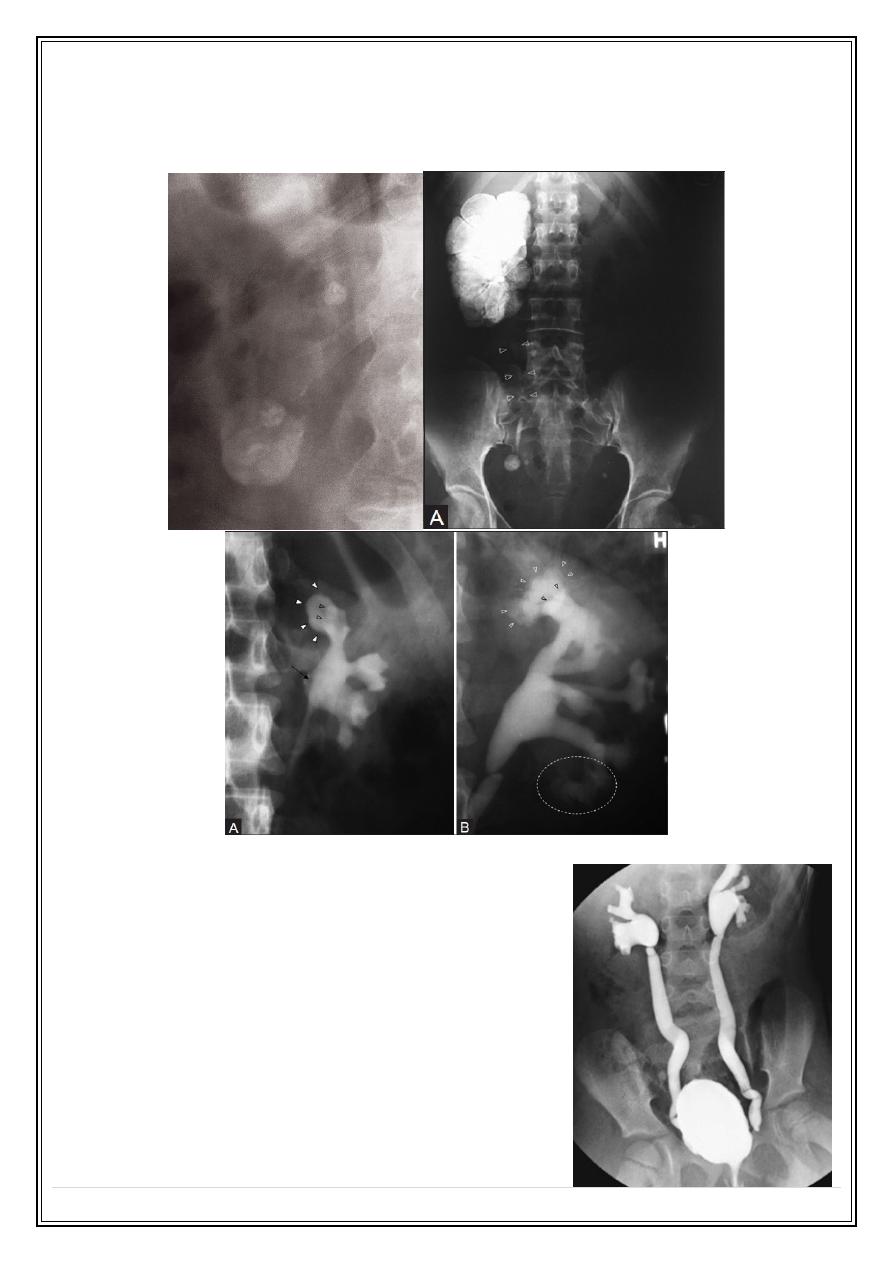
Fifth Stage
Diagnostic Imaging
Dr. Firas A. – Lecture 9
P a g e
5
If the bladder is involved, the wall is irregular because of inflammatory edema;
advanced disease causes fibrosis resulting in a thick-walled small volume bladder.
Multiple strictures may be seen in the urethra.
Chronic pyelonephritis (reflux nephropathy)
Local reduction in renal parenchymal width (scar
formation). The upper and lower calices are the
most susceptible to damage from reflux.
Dilatation of the calices in the scarred areas
Overall reduction in renal size partly from loss of
renal parenchyma.
Dilatation of the affected collecting system
Vesicoureteric reflux may be demonstrated at
micturating (voiding) cystography.
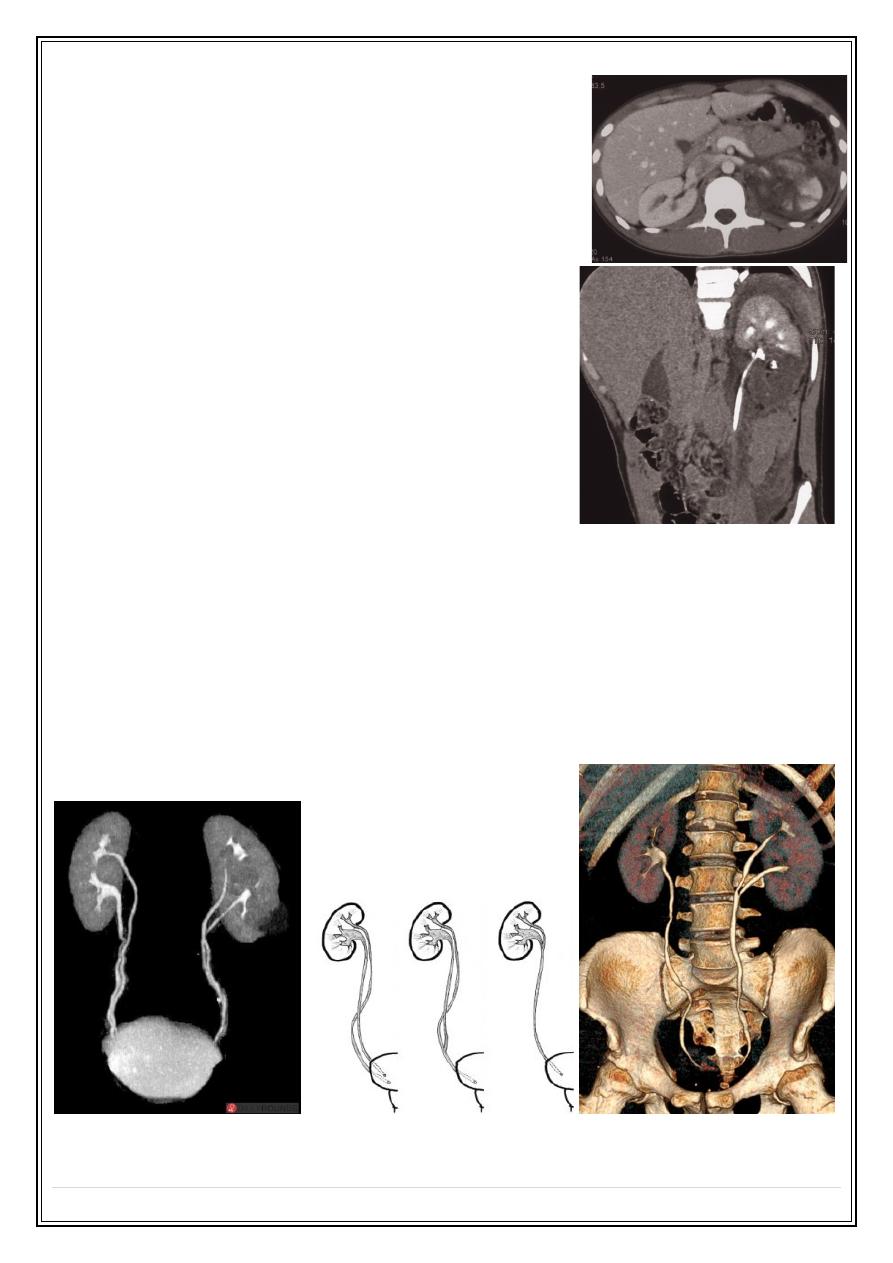
Fifth Stage
Diagnostic Imaging
Dr. Firas A. – Lecture 9
P a g e
6
Renal trauma
Computed tomography is the preferred
investigation, which can:
➢
Demonstrate the presence or absence of
perfusion to the injured kidney.
➢
Ensure that the opposite kidney is
normal.
➢
Show the extent of renal parenchymal
damage.
➢
Demonstrate injuries to other organs
Congenital anomalies of the urinary tract
Bifid collecting systems: most frequent congenital variation
The two ureters may join at any level between the renal hilum and the bladder or
may insert separately into the bladder
The upper moiety ureter may drain outside the bladder, e.g. into the vagina or
urethra, producing incontinence if the opening is beyond the urethral sphincter.
The lower moiety ureter may show reflux. And inserted proximal to upper moiety
ureter.
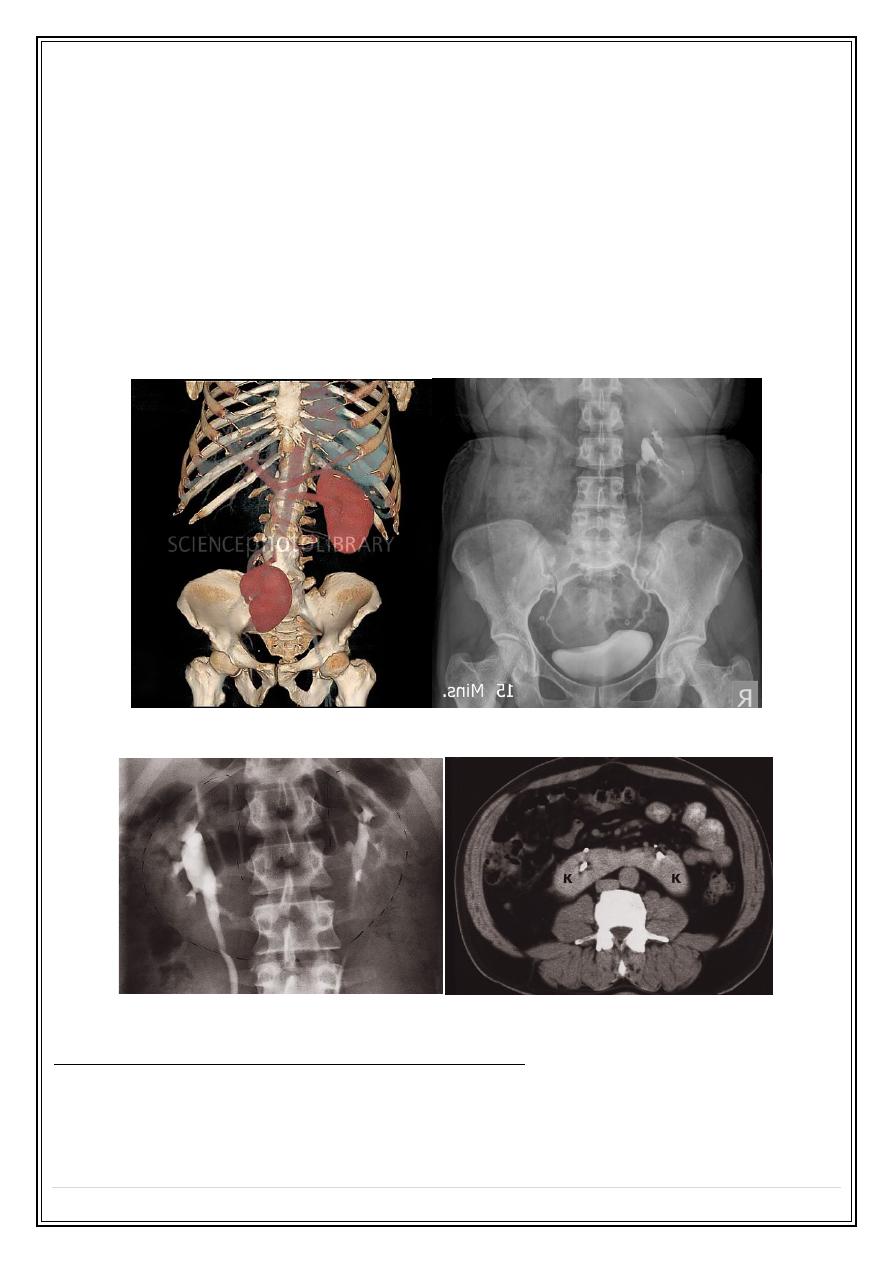
Fifth Stage
Diagnostic Imaging
Dr. Firas A. – Lecture 9
P a g e
7
Ectopic kidney:
During fetal development the kidneys ascend within the abdomen.
An ectopic kidney results if this ascent is halted.
They are usually in the lower abdomen and rotated so that the pelvis of the kidney
points forward.
The ureter is short and travels directly to the bladder.
Chronic pyelonephritis, hydronephrosis, and calculi are all more common in
ectopic kidneys
But usually it is an incidental finding.
Horseshoe kidney
Autosomal dominant polycystic kidney disease.
This is a familial disorder which although inherited, usually presents between the
ages of 35 and 55 years with hypertension, renal failure or hematuria
The diagnosis is readily made at ultrasound, as well as on CT
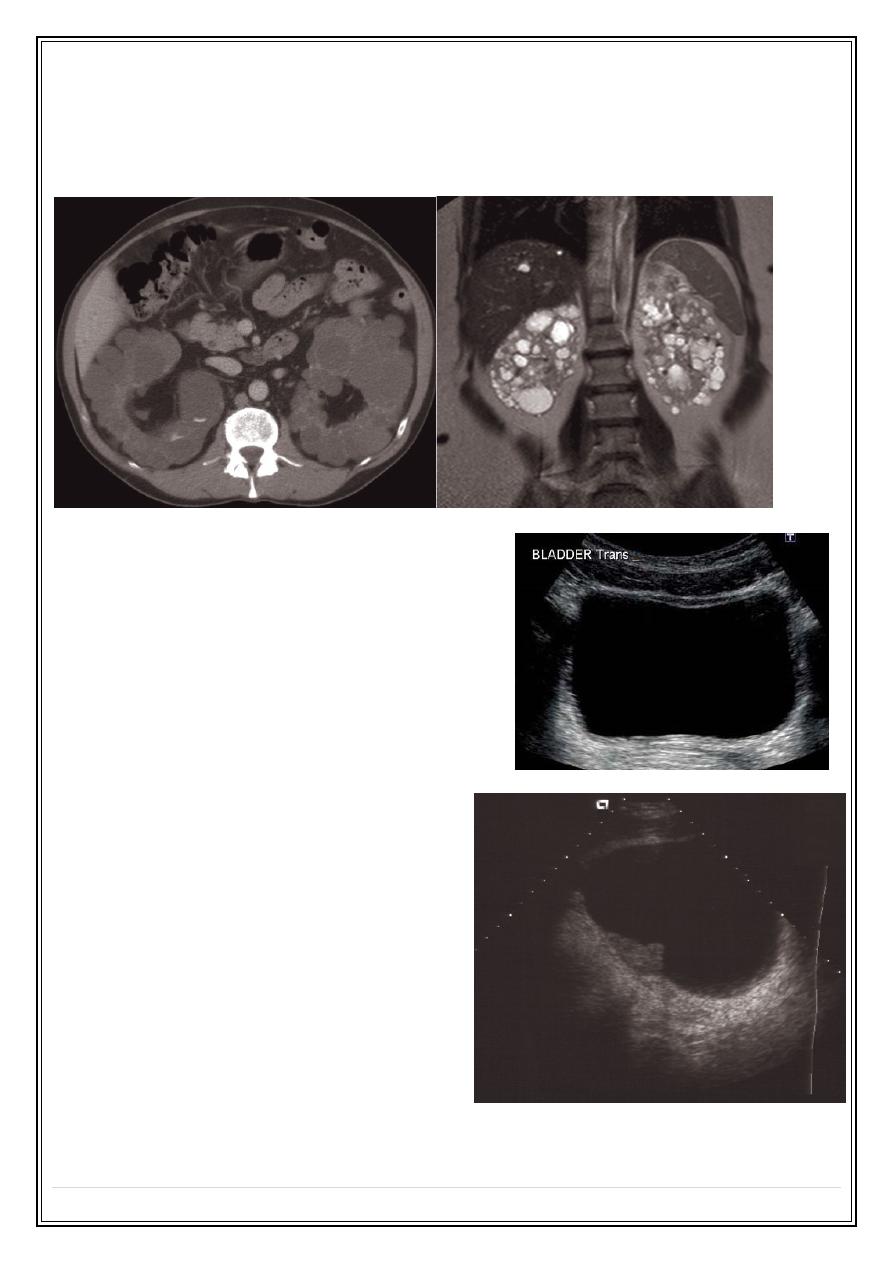
Fifth Stage
Diagnostic Imaging
Dr. Firas A. – Lecture 9
P a g e
8
The liver and pancreas may also contain cysts and these organs are routinely
examined in such patients
Ultrasound screening is usually offered at the age of 18 to the offspring of those
with the disease
Urinary bladder
Normal wall thickness when distended
should be less than 3 mm.
Bladder tumours
The bladder is the most frequent site
for neoplasms in the urinary tract.
Almost all are transitional cell
carcinoma
US and IVU
the roles of CT and MRI are to stage the
tumour, assessing the depth of invasion
within the muscle, can determine
spread of tumour beyond the bladder
wall and assess lymph node
involvement

Fifth Stage
Diagnostic Imaging
Dr. Firas A. – Lecture 9
P a g e
9
Bladder diverticula
Bladder diverticula may be congenital in origin but are usually the consequence of
chronic obstruction to bladder
Neurogenic bladder
There are two basic types of neurogenic bladder:
❖
The large atonic smooth-walled bladder with poor or absent contractions
and a large residual volume
❖
The hypertrophic type, which can be regarded as neurologically induced
bladder outflow obstruction (Christmas tree bladder)
Hypertrophic Neurogenic bladder
Christmas tree bladder

Fifth Stage
Diagnostic Imaging
Dr. Firas A. – Lecture 9
P a g e
10
Prostate and urethra:
Benign prostatic hypertrophy involves the median zone
Prostatic CA involve the peripheral zone
Bladder outflow obstruction
The most frequent cause of bladder outflow obstruction is enlargement of the
prostate. Other causes include bladder tumours, urethral strictures and, in male
infants or boys, posterior urethral valves
➢
Increased trabeculation and thickness of the bladder wall, often with
diverticula formation.
➢
Residual urine in the bladder after micturition.
➢
Dilatation of the collecting systems.
Urethral stricture:
Post-traumatic strictures are usually in the proximal penile urethra – the most
vulnerable portion of the urethra to external trauma. Such strictures are usually
smooth in outline and relatively short.
Inflammatory strictures, which are usually gonococcal in origin, may be seen in
any portion of the urethra, but are usually found in the anterior urethra. Usually
long
Ascending urethrogram
Testicular imaging
US and MRI
Torsion or infection (Doppler)
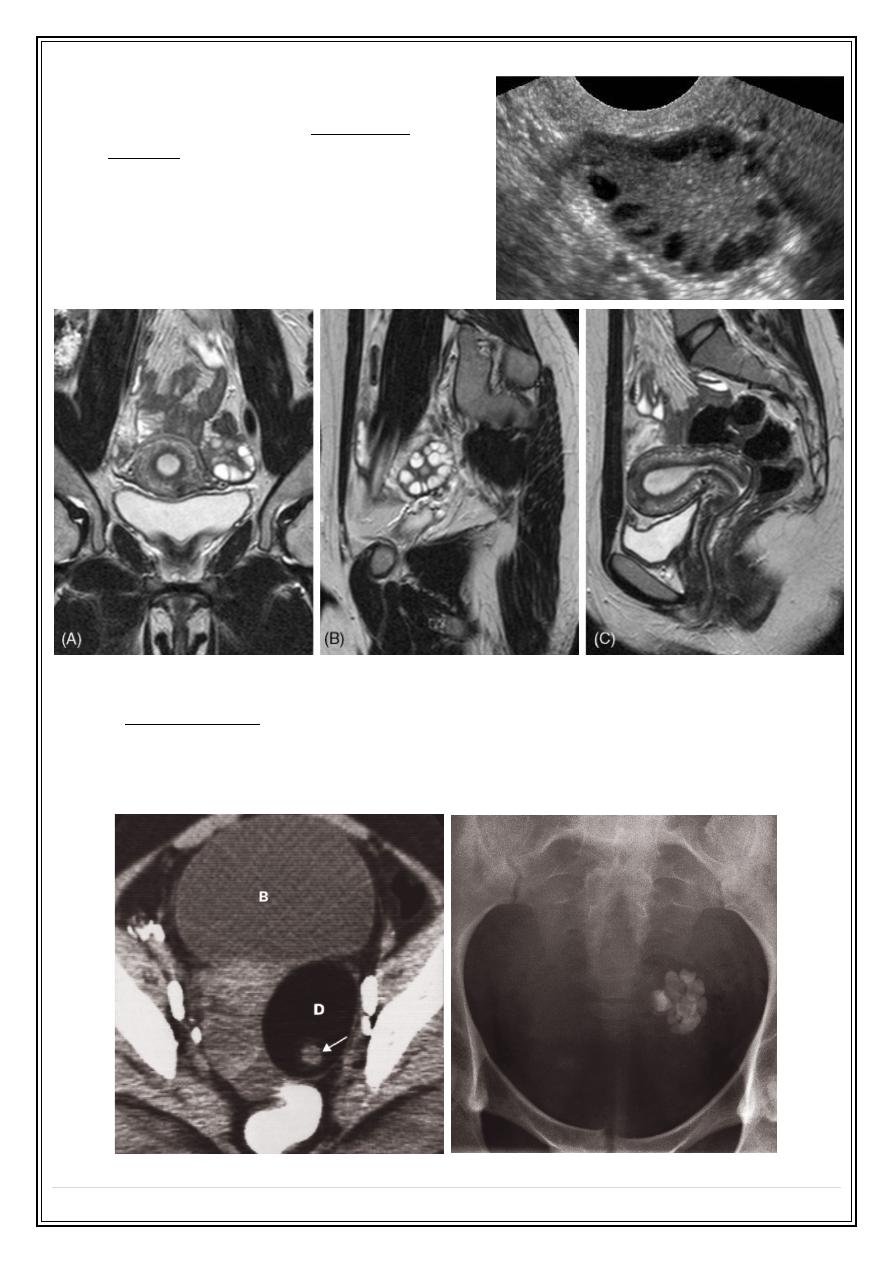
Fifth Stage
Diagnostic Imaging
Dr. Firas A. – Lecture 9
P a g e
11
Female Genital Tract
The typical features of polycystic
ovaries on ultrasound or MRI include
large volume ovaries with multiple small
follicles arranged around the periphery,
forming the appearance of a ‘string of
pearls’
A dermoid cyst can usually be confidently diagnosed because of the fat within it,
and it may contain various calcified components, of which teeth are the
commonest. The findings can usually be recognized on ultrasound and are readily
diagnosed on CT or MRI and sometimes on plain radiographs
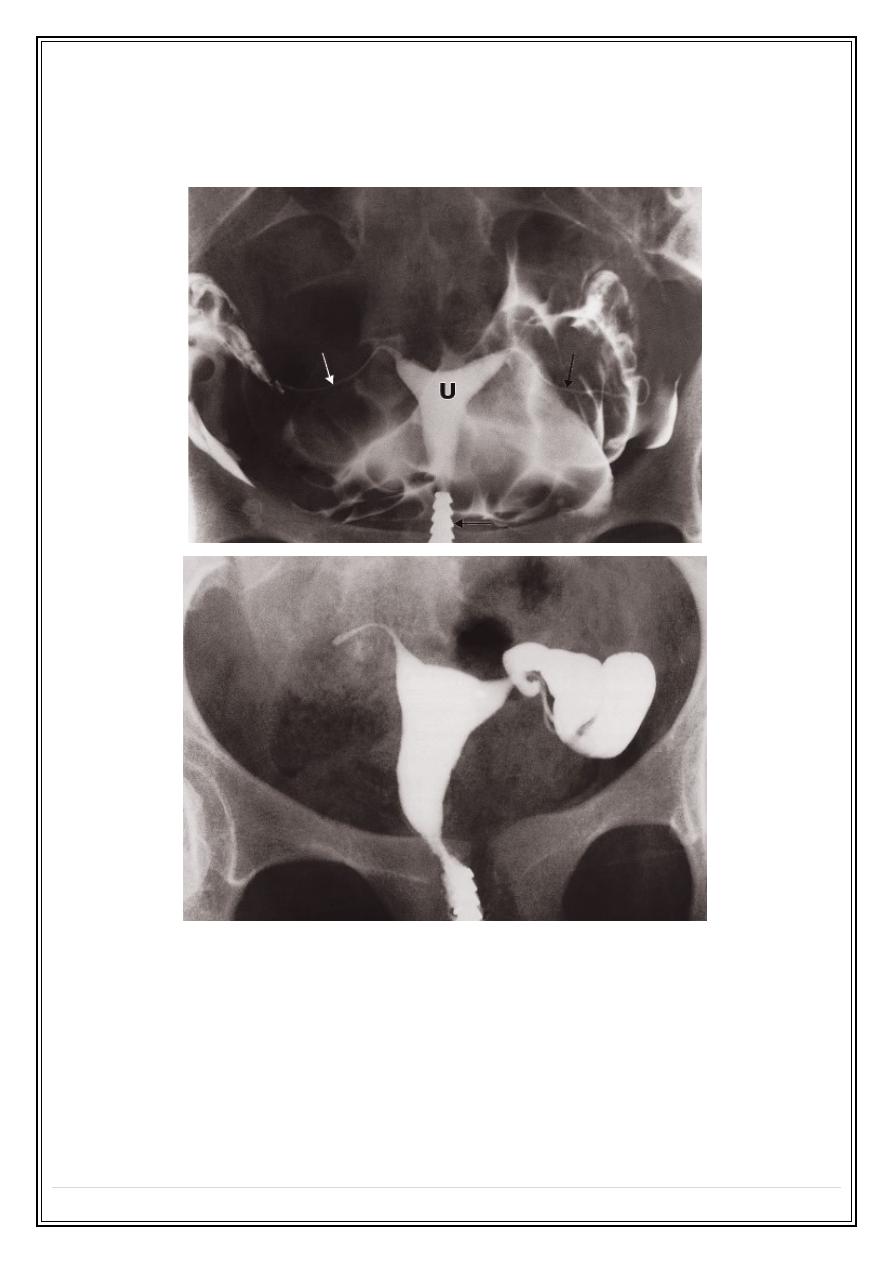
Fifth Stage
Diagnostic Imaging
Dr. Firas A. – Lecture 9
P a g e
12
Hysterosalpingography
To assess the patency of the fallopian tubes
Thank you,,,
